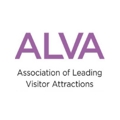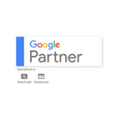Flattening the Visitor Curve: The next biggest challenge for tourism businesses

With the various discussions I’m having around the industry at the moment, it is becoming apparent to me that the preeminent challenge facing tourism business for the near term future is flattening the Visitor curve.
Before COVID-19, one of Digital Visitor’s core objectives for some clients was to even out booking and visitation periods by encouraging more people to book mid-week, and off-peak rather than attracting more visitors during busy peak times. This, however, was an objective presented to us by perhaps only 10-20% of clients.
With potential capacity reductions and social distance rules being implemented, it will be difficult for tourism businesses to make ends meet if we are only allowed to accommodate 30% – 50% of our regular numbers. That is why I predict evening out booking periods throughout all opening hours will be perhaps the single most important goal for tourism business for at least the next 6 – 12 months.
If attractions and restaurants are staggering visiting periods, to say 2-3 hours blocks, we need each of these periods full to our new capacity. Similarly, as accommodation providers, it’s even more important for us to drive guests on Sunday, Monday and Tuesday nights and migrate them across from typically more popular Thursday Friday and Saturday nights.
But the challenge is, how do we keep our guests and visitors at this level? We can’t have this rise to 30% and then drop to 10% mid-week and off-peak. We need to flatten the visitor curve, evening out the volume of guests and visitors so that we maintain peak capacity for as much of our opening hours as possible.
How can we do this?
In our experience, there are a number of key ways of doing this through your marketing and communications strategy.
Speak to the right audience at the right time
Different audiences will visit at different times. Families, for example, might want to visit earlier? My own children like waking up at 6 am, and so we find the morning is the perfect time do visit somewhere by leaving at 8:30 am and making it back home in time for lunch.
Some couples might well want to visit later in the day, and this is exemplified by later opening times and special events that attractions put on in the summer months, which often receive different audiences than their usual ‘day visitors’. Yes, this will have a lot to do with programming, but it might also have to do with the times that specific audiences would like to be active.
With all the content the industry has been creating over the last few months, this will have driven lots of brand new audiences to your website. By segmenting these audiences correctly, there is an opportunity to reach and communicate with specific audience groups in a more personalised way, and encourage them to visit at specific and different times.
Understand your customer’s jobs
So, we can reach different audiences, but what do we say to them?
This has typically come under the purview of utilising customer personas to craft marketing messages, but this is a little old hat nowadays.
Many organisations have moved towards a model of value proposition design to inform their communications strategies – inspired by the Strategyzer book and series, and this approach has a big part to play in reimagining how to communicate and compel your audiences.
This approach tells us that rather than pigeon-holing specific audiences – e.g. white, middle-aged male, lives in the home counties, enjoys rugby, reads the economist, shops at Waitrose etc… it asks us to look at the task or ‘jobs’ the customer needs to complete.
We then align our proposition as a business, with these jobs and this, in turn, creates value for the customer. When considering new audiences, think about the ‘jobs’ they have, and communicate the value you can bring them, when doing this ‘job’.
For example, in the previous point – my ‘job’ here is to engage my children in the morning when they are most alert and active. By knowing this, tourism business can engage most effectively with me, by showing me what they offer in the morning for me to engage my children.
The ‘job’ of 30 something-year-old, with no kids and in a newly formed couple might be ‘where would be a good place to go and spend some time together in the afternoon/evening’ bearing in mind the pubs and restaurants are all shut. Could this show that museums, offering later evening openings for the new ‘date night’ might offer value?
Do you see where I’m going with this? Consider the ‘jobs’ of the audiences you are trying to reach, and then match your content and communications strategy to reach them. And to finish off this point, look at how you can communicate different messages to different audiences at different times, to ensure you are maximising the capacity of your venues throughout the day.
Target your marketing
The above tactics simply won’t work with an old-school marketing approach. Before the lockdown, Digital Visitor surveyed many different sized attractions in different geographies to understand what percentage of their marketing budget was invested in digital marketing. While there were exceptions, with some as low as 5% and some as high as 80%, the median was around 25%. All our recent discussions have shown that, like many trends across our world, the natural movement that was occurring has been significantly accelerated, and we are now hearing that the majority of tourism businesses marketing investment will be made in digital marketing.
My reason for highlighting this point is that digital marketing is truly the most agile, measurable and effective communications approach available to us today. And it is these digital media, that allow us to target specific audiences most effectively.
Dynamic pricing
Whilst this is a bit more of a blunt tool, it would be remiss of me not to highlight the fantastic yet simple tactics that dynamic pricing can have on visitor numbers. Charging more for busier times during off-peak times has an immediate and significant effect on capacity management and revenue generation.
Traffic light availability
And an even more sophisticated solution if your technology permits, would be to combine online booking only, with a traffic light system for capacity. Just by showing certain times as green – where there is much more capacity, might well give people peace of mind and encourage them to visit during these times, rather than the busier periods where there are ‘only a few places remaining’.
In our experience, addressing these topline tactics with a stellar marketing strategy has proven to even out visitor numbers. Not only throughout the day but also the season. The right combination of technology, value creation, audience targeting and content can change the booking patterns you are used to and will enable you to address arguably the single greatest upcoming challenge for our tourism businesses.
Digital Visitor is well versed in defining these strategies, so please don’t hesitate to get in touch with us, if you’d like to know how to get this right
Anthony Rawlins is the Founder and CEO of Digital Visitor with over 15 years experience in crafting successful marketing strategies for the travel and tourism businesses. He has worked with leading organisations in every part of the industry including airlines, cruiselines, global hotel chains, destinations and attractions. Regarded as a visionary by many industry leaders, through his scientific background, data interpretation expertise and proclivity for creativity, he has a proven track record in accurately predicting future trends. Combined with expansive industry knowledge and pragmatic and commercial mindset he’s has been able to effectively translate these trends into actional strategies and tactics for Digital Visitor’s clients.










